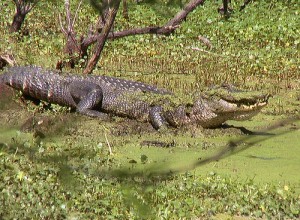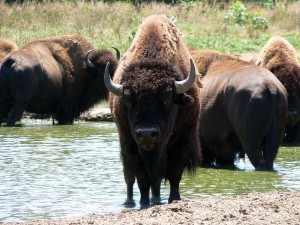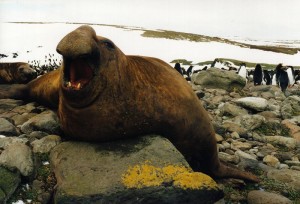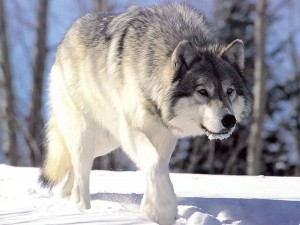Nine Species Saved From Extinction
/https://tf-cmsv2-smithsonianmag-media.s3.amazonaws.com/filer/20110520102307800px-Brown_pelican_-_natures_pics-300x202.jpg)
Last week, the U.S. government took the brown pelican (Pelecanus occidentalis) off the endangered species list. The birds' numbers had been depleted first by feather hunters and then by the pesticide DDT. But the pelicans made a comeback, starting with the 1972 ban on DDT, and now there are more than 650,000 in North and Central America. (The birds are doing so well, one even took out a Bugatti Veyron last week, though that may have been due instead to the idiot behind the wheel talking on his cell phone.)
To celebrate the brown pelican's success, here are eight more species that came back from the brink:
American alligator (Alligator mississipiensis)
Alligator leather is not only tough and durable but also pretty attractive. The popularity of alligator hides for leather made hunting of them common in the early 20th century. Even after it was outlawed, poaching continued into the 1970s. But laws that control the movement of hides and the creation of commercial alligator farms have taken pressure off the wild population, which now numbers a million or more.
Bald eagle (Haliaeetus leucocephalus)
Like the brown pelican, our national bird nearly got wiped out in the mid-20th century by DDT, which caused female eagles to produce eggs with shells too thin to withstand her weight. With DDT banned in the United States and Canada, the bird has made a full recovery and was taken off the endangered species list in 2007. They remain protected from hunting, though, under the 1940 Bald Eagle Protection Act.
American bison (Bison bison)
There once were perhaps 20 to 30 million bison (a.k.a. buffalo) roaming the plains of North American. Hunting in the 19th century drove their numbers down to just a few hundred by the 1880s. Only the skins were saved; their carcasses were left to rot. A few small herds survived, though, and the bison population now numbers around 350,000. Most of them, however, are raised on farms for meat. There are only four herds, including the one in Yellowstone National Park, that have not been genetically diluted by interbreeding with cattle.
Blue poison dart frog (Dendrobates azureus)
Their population in Suriname has been dwindling due to habitat destruction and the illegal pet trade. However, captive breeding programs in several zoos have been successful, and scientists plan to reintroduce the frog to areas where they have disappeared.
Elephant seals (Mirounga angustirostris and M. leonina)
These large marine mammals, perhaps best know for their large schnoz, were nearly hunted to extinction for their blubber, which was made into oil. Large-scale hunting ended by the end of the 19th-century and the population recovered by the mid-20th, now numbering in the hundreds of thousands.
Atlantic goliath grouper (Epinephelus itajara)
This 700-pound grouper likes to hang out on coral reefs. But once fishermen discovered how easy it was to spear the fearless fish, the groupers' population began to dive. Bans on their fishing were put in place in the United States in 1990 and in the Caribbean in 1993. Though still classified as endangered, the goliath grouper's numbers are rising.
Gray wolf (Canis lupus)
It's hard to blame people for wanting to kill a predatory creature that goes after your livestock or your pets. But the extirpation of the gray wolf from most of the United States led to unintended consequences for the environment, throwing ecosystems out of balance. A reintroduction program in the Rockies, however, has been largely successful.
Humpback whale (Megaptera novaeangliae)
Like the elephant seals, humpback whales were nearly wiped out by hunters who wanted their blubber (and also their baleen and flesh). Some 250,000 were killed in the 20th century alone. A ban on hunting, in place since 1966, has let the whale populations recover, and there are now around 80,000 distributed around the world's oceans.
/https://tf-cmsv2-smithsonianmag-media.s3.amazonaws.com/accounts/headshot/Sarah-Zielinski-240.jpg)








/https://tf-cmsv2-smithsonianmag-media.s3.amazonaws.com/accounts/headshot/Sarah-Zielinski-240.jpg)